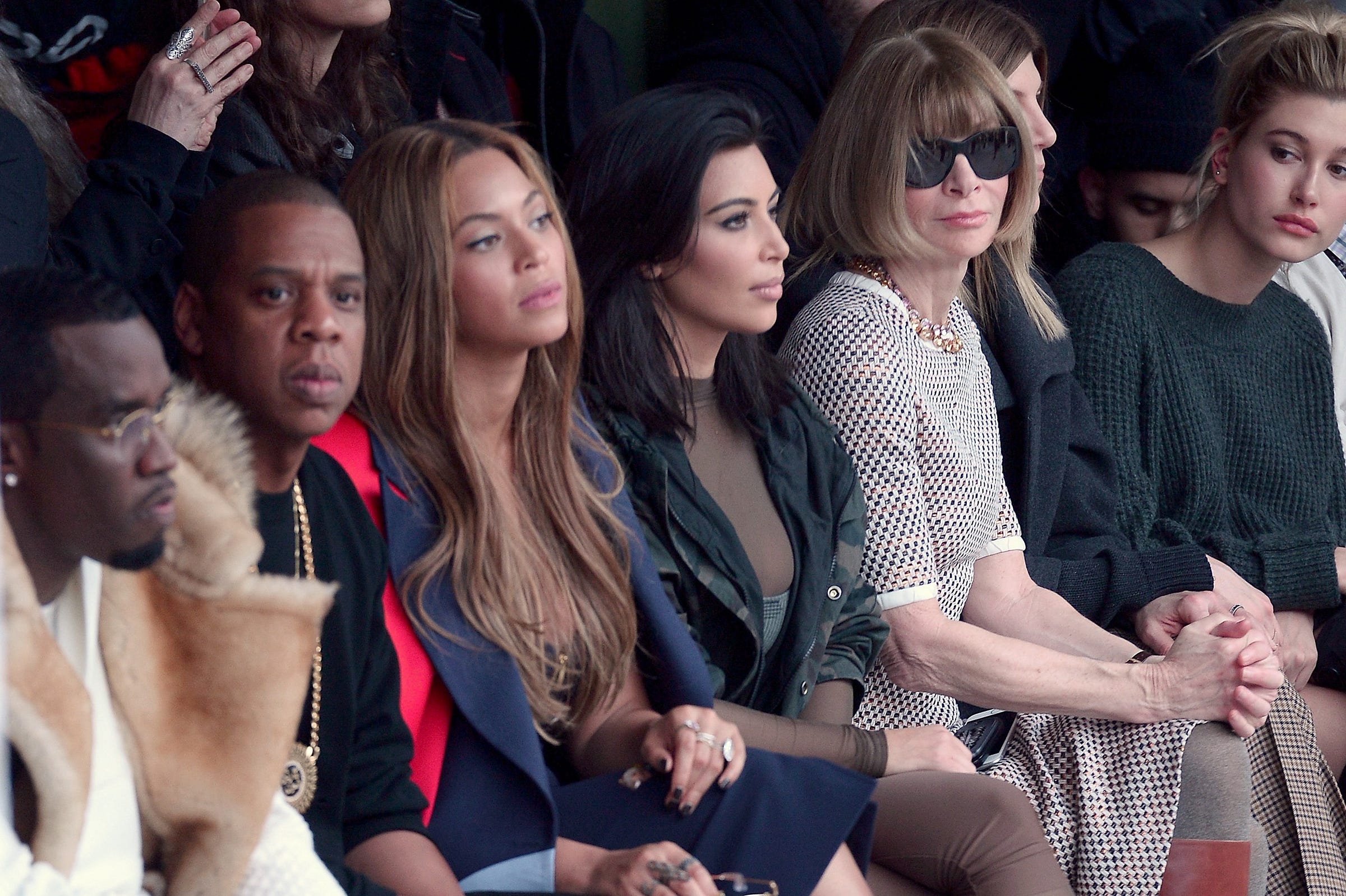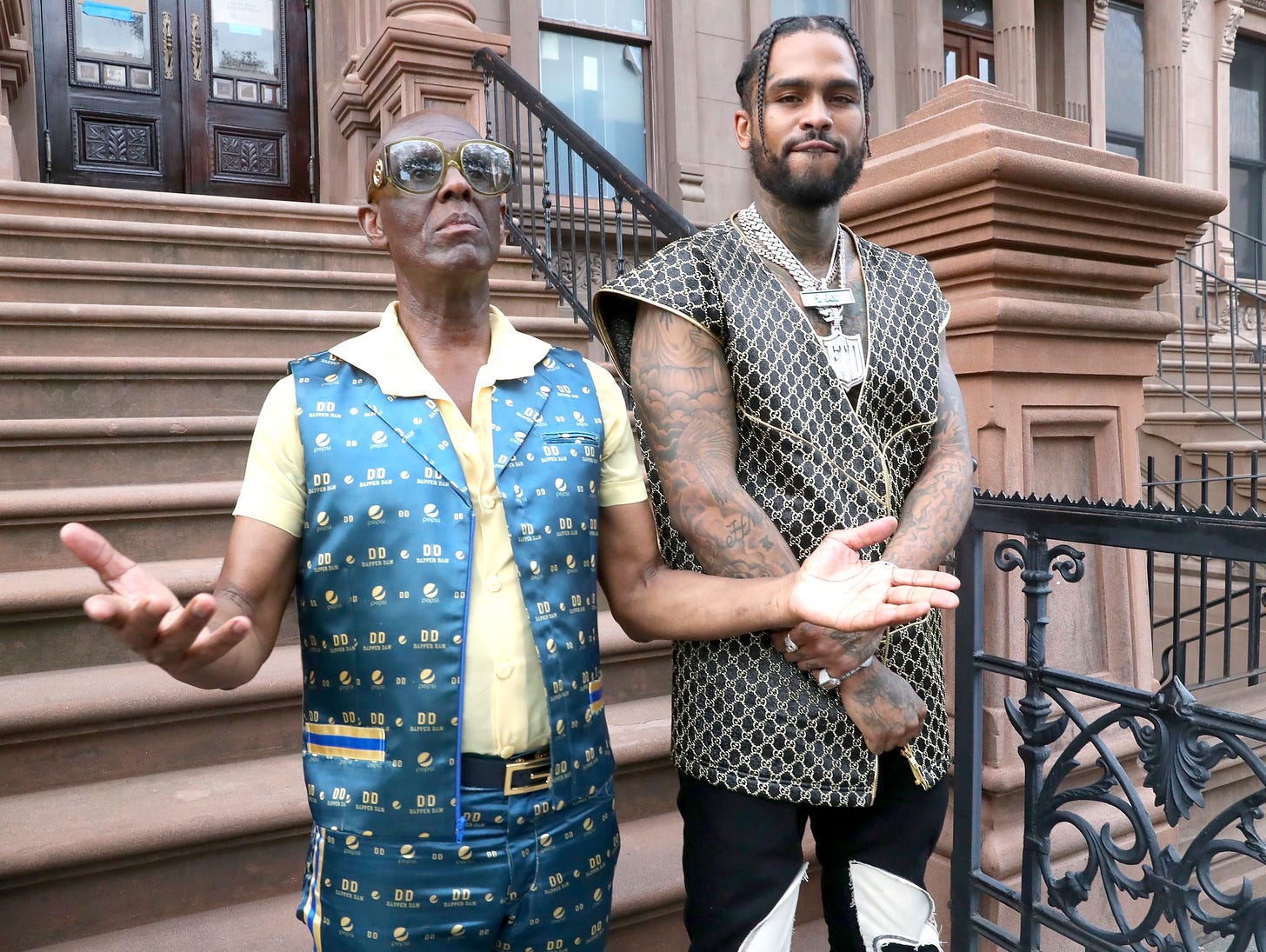'A Diddy-shaped hole at the Met Gala'
The many contradictions at the heart of the Met Gala's 2025 festival "Superfine: Tailoring Black Style", which takes place on the same day as the start of Diddy's sex trafficking trial

On Monday the 2025 Met Gala will celebrate the Metropolitan Museum of Art’s new costume exhibit, “Superfine: Tailoring Black Style”. Affectionately referred to by Vogue as “fashion’s biggest night out”, the Met Gala is officially a fundraiser for the museum, with tables sold for up to $75,000. The Met Gala is the biggest red carpet event of the year, eclipsing even the Oscars. Not for nothing did Amy Odell call it, ”the biggest display of money and wealth outside of a coronation”.
The stakes for this year’s Met Gala feel higher than usual, coming at a moment of turmoil for Louis Vuitton, the luxury goods giant which is sponsoring it, and the industry as a whole. Awkwardly, it also happens to be the same day as the start of the trial of regular attendee Diddy, one of hip-hop and fashion’s biggest stars, whose appearance in federal court in Manhattan on the same day threatens to overshadow the fundraising event.
Diddy as fashion practitioner
“I think there’s going to be a huge Diddy-shaped hole at this year's Met Gala”, says Nels Abbey, author of The Hip-Hop MBA, a book which analyses the business strategies of rap entrepreneurs from the perspective of his former career as an asset manager for the US investment giant BlackRock. “Diddy always put on a show there and it was how he boosted his brand as a practitioner in the fashion space”, he said.
“I think there’s going to be a huge Diddy-shaped hole at this year's Met Gala.” - Nels Abbey, author of The Hip-Hop MBA
Diddy has long been a major figure in fashion. “I’d never heard of Moschino and Versace until I heard Biggie sing about them on the song Hypnotize”, says Abbey. “Before hip-hop these brands were elite but they weren’t really mainstream”. Diddy was the late rapper Biggie’s great collaborator, who also helped to style him. A 2019 Vogue profile of Diddy to coincide with his 50th birthday began with the words, “It’s hard to overstate the sartorial impact of Sean ‘Diddy’ Combs”, continuing its description of him as, “one of the most vocal advocates of streetwear’s haute legitimacy”. He famously used the 2023 gala to launch his Sean John couture line dressed in a floor-length black cape made out of silk gardenia roses.
For those reasons alone, his absence will inevitably be noticed and would explain why he reportedly tried to get his hearing moved to after the event. Expect to see cutting Diet Prada posts and wry mentions of his Met Gala prison outfit. One might also ask whether Diddy was part of the Met and Anna Wintour’s plans early last year, and to what extent the show changed as a result of the scandal and his subsequent indictment. If Diddy had not been indicted, would he have been a key part of Monday’s show?
‘Colonial broad’
Adding to the potential awkwardness around this year’s Met Gala is Anna Wintour’s historic track record on diversity. In 2020, in the wake of the Black Lives Matter movement and the George Floyd protests, Wintour apologised to staff for “publishing images or stories that have been hurtful or intolerant” and admitted that there were too few employees of colour. That prompted the New York Times to ask whether the magazine’s diversity push had been too little, too late.
The late Vogue journalist André Leon Talley once described his former boss as a “colonial broad” after a public falling out, but said that he still wanted her “acceptance and approval”. He also said, “I do not think she will ever let anything get in the way of her white privilege”. Wintour later paid tribute to him in a feature after he died in 2022. “I have thought of André so many times – happy and bittersweet memories mixed together”, she wrote. Talley’s Louis Vuitton trunks, Morty Sills suits and kaftans will be exhibited at this year’s show.
The Black Dandy
Despite that awkward context, this year it feels like there’s much less noise than there was before 2024’s gala. Its “Garden of Time” theme and dress code was inspired by a JG Ballard short story in which the super-rich hide away in “arcadian splendour” while the “unwashed” masses riot, leading to opinion pieces saying the event was “a tone-deaf charade of excess and hypocrisy”. However, the general consensus is that a celebration of Black style is long overdue.
Inspired by Monica L. Miller’s 2009 book, Slaves to Fashion: Black Dandyism and the Styling of Black Diasporic Identity, the exhibition and gala’s theme looks at how fashion empowered Black men through history and political movements: from slavery and colonialism to the Harlem Renaissance and the Civil Rights Movement and beyond. Although the event was announced before the US election, it comes during an ultra-conservative moment in American history when civil rights and the idea of promoting diversity is under attack from Donald Trump and his MAGA-land people. Wintour reportedly banned Trump from attending the gala in 2017, but he hadn’t attended since 2012.
Taste-brokers

Mentions of hip-hop in the promotional materials for Superfine are conspicuously absent, which is odd because its influence on fashion and style is both obvious and undeniable. “Rappers have become the dominant figures in fashion and have therefore become the dominant figures at the Met Gala. They made the Met Gala culturally relevant and so this year’s theme is the right way to go,” says Abbey. “Kanye and Kim Kardashian was always a big event. These were the cultural images that helped shape our time effectively”, he said.
A funny dance of rejection and acceptance between hip-hop and high fashion has existed since rap music’s emergence as a luxury tastemaker in the late 1980s. Dapper Dan inside his Harlem atelier helped to create the template for hip-hop fashion as we know it today, by emblazoning the logos of European luxury brands such as the interlocking Gs of Gucci, and the “LV” of Louis Vuitton, onto the parkas, jumpsuits and varsity jackets of crack cocaine kingpins including his client Alpo Martinez, sport stars, and rappers and DJs such as Eric B and Rakim.
“He was sued for trademark infringement but is now a collaborator with Gucci,“ says Abbey. “It took hip-hop closer to the mainstream but also helped drag these brands into the mainstream. You’ve got to remember that hip-hop was getting its style template from drug dealers. It was a symbiotic relationship”. Dapper Dan’s creations do at least feature prominently in the exhibition.
‘Hip-hop was getting its style template from drug dealers. It was a symbiotic relationship’ - Nels Abbey
In my own career writing for British GQ, I have often noticed an ambivalence towards hip-hop from luxury figures. I once asked the head of haute horology of Patek Philippe what he thought of “buss down” watches, which have been customized and festooned with diamonds, and are popular with rappers.




